Pink Floyd – The Wall
7.5 /10 2 Votes
Duration Language English | 8/10 IMDb Country United Kingdom | |||||||||||||||||||||||||||||||||
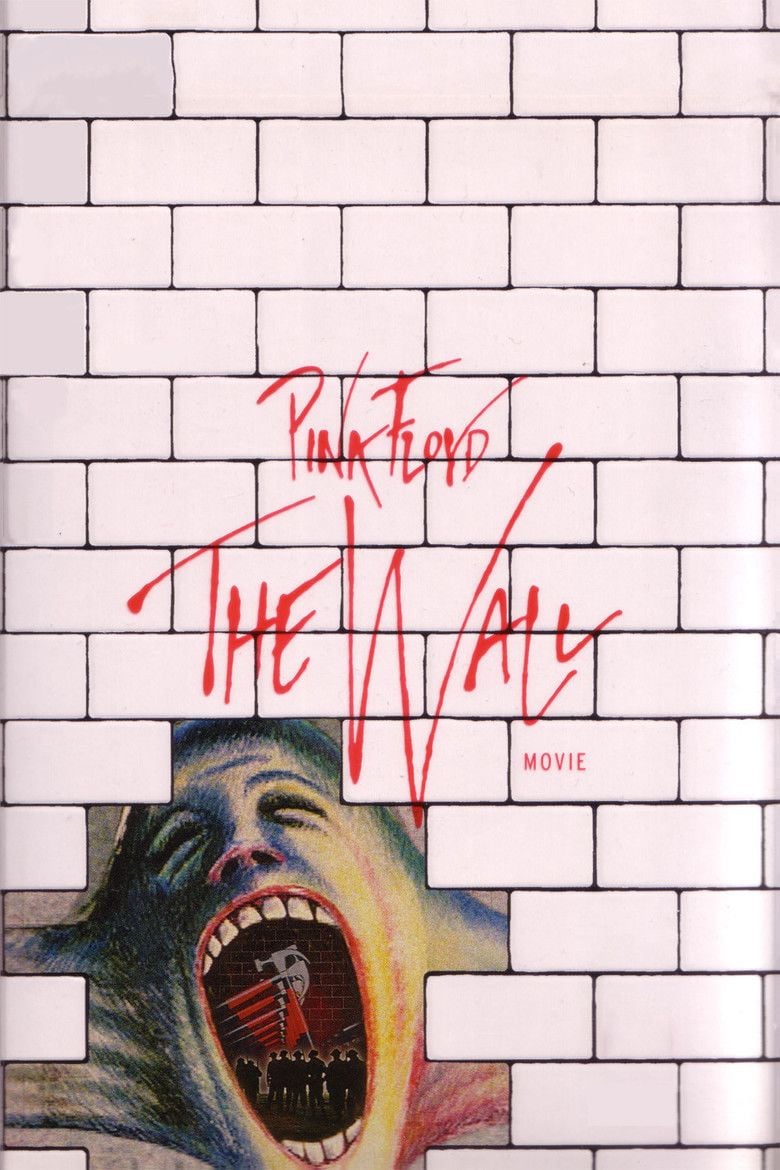 | ||||||||||||||||||||||||||||||||||
Initial release July 14, 1982 (United Kingdom) Cast Similar movies Whitesnake: Made in Japan , Kiss: Monster Tour in Zurich , Bon Jovi: Live on VH1 Unplugged , Taylor Swift & Def Leppard: CMT Crossroads , Kiss: Rock the Nation Live , Kiss: MTV Unplugged Tagline The Memories. The Madness. The Music... The Movie. | ||||||||||||||||||||||||||||||||||
Pink Floyd – The Wall is a 1982 British live-action/animated musical drama film directed by Alan Parker with animated segments by political cartoonist Gerald Scarfe, and is based on the 1979 Pink Floyd album of the same name. The film centers around a confined rocker named Pink, who, after being driven into insanity by the death of his father and many depressive moments during his lifetime, constructs a metaphorical (and sometimes physical) wall to be protected from the world and emotional situations around him. When this coping mechanism backfires he puts himself on trial and sets himself free. The screenplay was written by Pink Floyd vocalist and bassist Roger Waters.
Contents
- Plot
- Concept
- Development
- Filming
- Release
- Box office and critical reception
- Themes and analysis
- Home media
- Documentary
- Soundtrack
- References

Like its musical companion, the film is highly metaphorical and symbolic imagery and sound are present most commonly. However, the film is mostly driven by music, and does not feature much dialogue. Gerald Scarfe drew and animated 15 minutes of animated sequences, which appear at several points in the film. It was the seventh animated feature to be presented in Dolby Stereo. The film is best known for its disturbing surrealism, animated sequences, sexual situations, violence and gore. Despite its turbulent production and the creators voicing their discontent about the final product, the film has since fared well generally, and has established cult status.
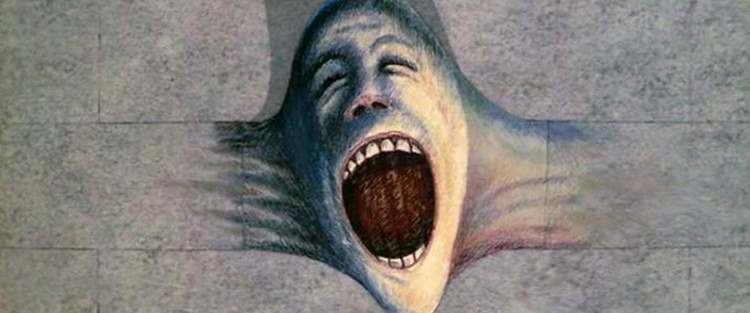
Plot
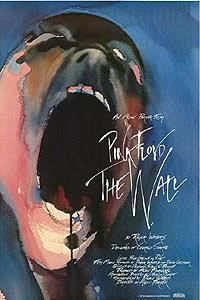
Pink is a rock star, one of several reasons behind his apparent depressive and detached emotional state. He is first seen in an unkempt hotel room, motionless and expressionless, watching television while the Vera Lynn recording of "The Little Boy that Santa Claus Forgot" plays. It is later revealed that Pink's father, a British soldier, was killed in action while defending the Anzio bridgehead during World War II, in Pink's infancy.
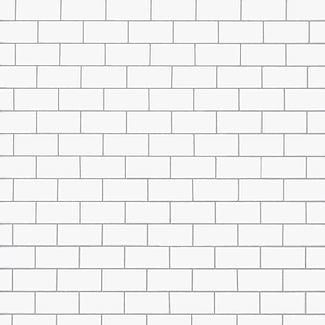
In a flashback, Pink is a young English boy growing up in the early 1950s. Throughout his childhood, Pink longs for a father figure. He discovers a scroll from "kind old King George" and other relics from his father's military service and death, placing a bullet on the track of an oncoming train. At school, he is caught writing poems in class and humiliated by the teacher. To the tune of "Another Brick in the Wall (Part 2)", Pink imagines a surrealistically oppressive school system in which children fall into a meat grinder. The children then rise in rebellion and destroy the school, carrying the Teacher away to an unknown fate. Pink is also negatively affected by his overprotective Mother. Such traumatic experiences are represented as "bricks" in the metaphorical wall he constructs around himself that divides him from society.
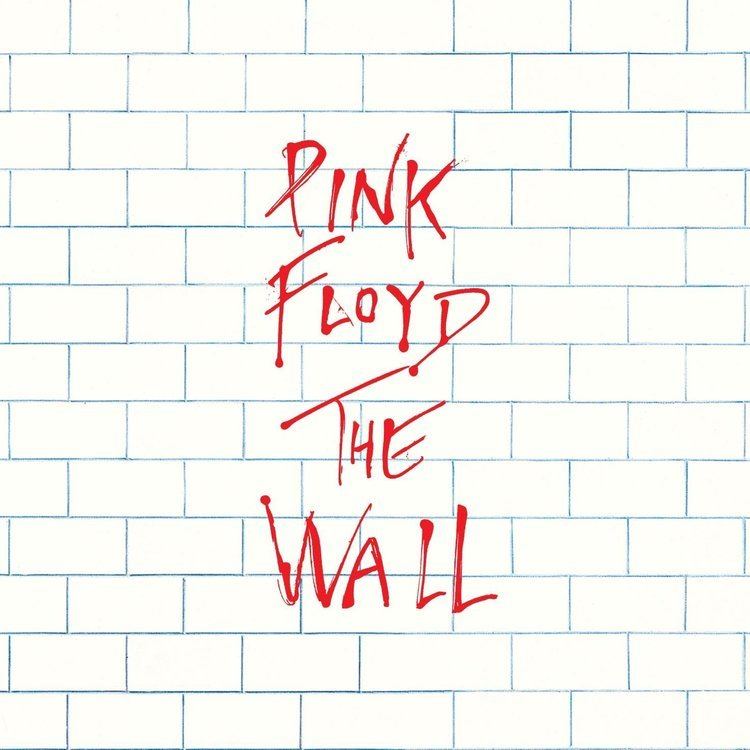
As an adult, Pink eventually marries, but he and his wife soon grow apart. While he is in the United States on tour, Pink learns that his wife is having an affair. He turns to a willing groupie, whom he brings back to his hotel room only to trash it in a fit of violence, terrifying the groupie out of the room.

Pink slowly begins to lose his mind to metaphorical "worms". He shaves all his body hair and, while watching The Dam Busters on television, morphs into a neo-Nazi alter-ego. Pink's manager, along with the hotel manager and some paramedics, discover Pink unresponsive and inject him with drugs to enable him to perform.
Pink fantasises that he is a dictator and his concert is a neo-Nazi rally. His followers proceed to attack ethnic minorities, and Pink holds a rally in suburban London, singing "Waiting for the Worms". The scene is intercut with images of animated marching hammers that goose-step across ruins. Pink then stops hallucinating and screams "Stop!" He then takes refuge in the toilets at the concert venue, reciting poems.
In a climactic animated sequence, Pink, depicted as a small, almost inanimate rag doll, is on trial, and his sentence is "to be exposed before [his] peers." The judge gives the order to "tear down the wall". Following a prolonged silence, the wall is smashed.
Several children are seen cleaning up a pile of debris after an earlier riot, with a freeze-frame on one of the children emptying a Molotov cocktail.
Concept
In mid-1970s, as Pink Floyd gained mainstream fame, Waters began feeling increasingly alienated from their audiences:
Audiences at those vast concerts are there for an excitement which, I think, has to do with the love of success. When a band or a person becomes an idol, it can have to do with the success that that person manifests, not the quality of work he produces. You don't become a fanatic because somebody's work is good, you become a fanatic to be touched vicariously by their glamour and fame. Stars—film stars, rock 'n' roll stars—represent, in myth anyway, the life as we'd all like to live it. They seem at the very centre of life. And that's why audiences still spend large sums of Money at concerts where they are a long, long way from the stage, where they are often very uncomfortable, and where the sound is often very bad.
Waters was also dismayed by the "executive approach", which was only about success, not even attempting to get acquainted with the actual persons of whom the band was comprised (addressed in an earlier song from Wish You Were Here, "Have a Cigar"). The concept of the wall, along with the decision to name the lead character "Pink", partly grew out of that approach, combined with the issue of the growing alienation between the band and their fans. This symbolised a new era for rock bands, as Pink Floyd "explored (... ) the hard realities of 'being where we are'", drawing upon existentialists, namely Jean-Paul Sartre.
Development
Even before the original Pink Floyd album was recorded, a film was intended to be made from it. However, the concept of the film was intended to be live footage from the album's tour, with Scarfe's animation and extra scenes. The film was going to star Waters himself. EMI did not intend to make the film, as they did not understand the concept.
Director Alan Parker, a Pink Floyd fan, asked EMI whether The Wall could be adapted to film. EMI suggested that Parker talk to Waters, who had asked Parker to direct the film. Parker instead suggested that he produce it and give the directing task to Gerald Scarfe and Michael Seresin, a cinematographer. Waters began work on the film's screenplay after studying scriptwriting books. He and Scarfe produced a special-edition book containing the screenplay and art to pitch the project to investors. While the book depicted Waters in the role of Pink, after screen tests, he was removed from the starring role and replaced with punk musician and frontman of the Boomtown Rats, Bob Geldof. In Behind the Wall, both Waters and Geldof later admitted to a story during casting where Geldof and his manager took a taxi to an airport, and Geldof's manager pitched the role to the singer, who continued to reject the offer and express his contempt for the project throughout the fare, unaware that the taxi driver was Waters' brother, who promptly proceeded to tell Waters about Geldof's opinion.
Since Waters was no longer in the starring role, it no longer made sense for the feature to include Pink Floyd footage, so the live film aspect was dropped. The footage culled from the five Wall concerts at Earl's Court from 13–17 June 1981 that were held specifically for filming was deemed unusable also for technical reasons as the fast Panavision lenses needed for the low light levels turned out to have insufficient resolution for the movie screen. Complex parts such as "Hey You" still had not been properly shot by the end of the live shows. Parker also managed to convince Waters and Scarfe that the concert footage was too theatrical and that it would jar with the animation and stage live action. After the concert footage was dropped, Seresin left the project and Parker became the only director connected to The Wall.
Filming
Parker, Waters and Scarfe would have frequent clashes with each other during production, to the point the director described the filming as "one of the most miserable experiences of my creative life." Scarfe has declared that he would drive to Pinewood Studios carrying a bottle of Jack Daniel's, because "I had to have a slug before I went in in the morning, because I knew what was coming up, and I knew I had to fortify myself in some way."
During production, while filming the destruction of a hotel room, Geldof suffered a cut to his hand as he pulled away the Venetian blinds. The footage remains in the film. Also, it was discovered while filming the pool scenes that Geldof did not know how to swim. Interiors were shot at Pinewood Studios, and it was suggested that they suspend Geldof in Christopher Reeve's clear cast used for the Superman flying sequences, but his frame was too small by comparison; it was then decided to make a smaller rig that was a more acceptable fit, and he simply lay on his back.
The war scenes were shot on Saunton Sands in North Devon, which was also featured on the cover of Pink Floyd's A Momentary Lapse of Reason six years later.
Release
The film was shown "out of competition" during the 1982 Cannes Film Festival.
The film's official premiere was at the Empire, Leicester Square in London, on 14 July 1982. It was attended by Waters and fellow Pink Floyd members David Gilmour and Nick Mason, but not Richard Wright, who was no longer a member of the band. It was also attended by various celebrities including Geldof, Scarfe, Paula Yates, Pete Townshend, Sting, Roger Taylor, James Hunt, Lulu and Andy Summers.
Box office and critical reception
The film opened with a limited release on 6 August 1982 and entered at No. 28 of the US box office charts despite only playing in one theatre on its first weekend, grossing over $68,000, a rare feat even by today's standards. The film then spent just over a month below the top 20 while still in the top 30. The film later expanded to over 600 theatres on 10 September, achieving No. 3 at the box office charts, below E.T. the Extra-Terrestrial, and An Officer and a Gentleman. The film eventually earned $22 million before closing in early 1983.
The film received generally positive reviews. Reviewing The Wall on their television programme At the Movies in 1982, film critics Roger Ebert and Gene Siskel gave the film "two thumbs up". Ebert described The Wall as "a stunning vision of self-destruction" and "one of the most horrifying musicals of all time ... but the movie is effective. The music is strong and true, the images are like sledge hammers, and for once, the rock and roll hero isn't just a spoiled narcissist, but a real, suffering image of all the despair of this nuclear age. This is a real good movie." Siskel was more reserved in his judgement, stating that he felt that the film's imagery was too repetitive. However, he admitted that the "central image" of the fascist rally sequence "will stay with me for an awful long time." In February 2010, Roger Ebert added The Wall to his list of "Great Movies," describing the film as "without question the best of all serious fiction films devoted to rock. Seeing it now in more timid times, it looks more daring than it did in 1982, when I saw it at Cannes ... It's disquieting and depressing and very good."
It was chosen for opening night of Ebertfest 2010. Rotten Tomatoes currently ranks the film with a critics review of 70% rating (based on 20 reviews). Danny Peary wrote that the "picture is unrelentingly downbeat and at times repulsive ... but I don't find it unwatchable – which is more than I could say if Ken Russell had directed this. The cinematography by Peter Bizou is extremely impressive and a few of the individual scenes have undeniable power." Waters has expressed deep reservations about the film, saying that the filming had been "a very unnerving and unpleasant experience ... we all fell out in a big way." As for the film itself, he said: "I found it was so unremitting in its onslaught upon the senses, that it didn't give me, anyway, as an audience, a chance to get involved with it," although he had nothing but praise for Geldof's performance. David Gilmour stated (on the "In the Studio with Redbeard" episodes of The Wall, A Momentary Lapse of Reason and On an Island) that the conflict between him and Waters started with the making of the film. Gilmour also stated on the documentary Behind The Wall (which was aired on the BBC in the UK and VH1 in the US) that "the movie was the less successful telling of The Wall story as opposed to the album and concert versions." Although the symbol of the crossed hammers was a creation of the film and not related to any real racist group, it was adopted by white supremacist group the Hammerskins in the late 1980s. It earned its creators two British Academy Awards; 'Best Sound' for James Guthrie, Eddy Joseph, Clive Winter, Graham Hartstone & Nicholas Le Messurier; and 'Best Original Song' for Waters.
Themes and analysis
It has been suggested that the protagonist stands in some way for Waters. Beyond the obvious parallel of them both being rock stars, like Pink, Waters lost his father in infancy and had marital problems, divorcing several times.
Romelo and Cabo place the Nazism and imperialism related symbols in the context of Margaret Thatcher's government and British foreign policy especially concerning the Falklands issue.
Home media
Pink Floyd – The Wall was released on VHS in 1983 (MV400268), 1989 (M400268), 1994 (M204694) by MGM/UA Home Entertainment, and 1999 (CV50198) by Columbia Music Video.
The DVD was released in 1999 (UPC: 074645019895) and 2005 (UPC: 074645816395) by Columbia Music Video.
Documentary
A documentary was produced about the making of Pink Floyd – The Wall entitled The Other Side of the Wall that includes interviews with Parker, Scarfe, and clips of Waters, originally aired on MTV in 1982. A second documentary about the film was produced in 1999 entitled Retrospective that includes interviews with Waters, Parker, Scarfe, and other members of the film's production team. Both are featured on The Wall DVD as extras.
Soundtrack
Song changes from album:
The only songs from the album not used in the film are "Hey You" and "The Show Must Go On". "Hey You" was deleted as Waters and Parker felt the footage was too repetitive (eighty percent of the footage appears in montage sequences elsewhere) but available to view as in worn black and white work print form as a bonus feature on the DVD release under the name "Reel 13".
A Soundtrack album from Columbia Records was listed in the film's end credits, but only a single containing "When the Tigers Broke Free" and the rerecorded "Bring the Boys Back Home" was released. "When the Tigers Broke Free" later became a bonus track on the band's 1983 album The Final Cut, an album Waters intended as an extension to The Wall. Guitarist David Gilmour, however, dismissed the album as a collection of songs that had been rejected for The Wall project, but were being recycled. The song, in the edit used for the single, also appears on the 2001 compilation album Echoes: The Best of Pink Floyd.
